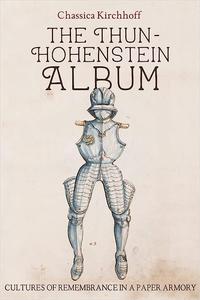
Free Download Chassica Kirchhoff, "The Thun-Hohenstein Album: Cultures of Remembrance in a Paper Armory "
English | ISBN: 1837650438 | 2023 | 392 pages | PDF | 42 MB
The first extensive study of the depiction of the armour in the Thun-Hohenstein Album against the vibrant artistic and cultural contexts that created it.
In late medieval and early modern Europe, armour was more than a defensive technology for war or knightly sport. Its diverse types formed a complex visual language. Luxury armour was fitted precisely to a wearer's body, and its memorable details declared his status. Empty armour could evoke an owner's physical presence, prompting recollection of knightly personae, glittering pageantry, and impressive feats of arms. Its mnemonic power persisted long after the battle had ended, the trumpets had gone silent, and the dust had settled in the tournament arena.
Previously believed to contain preliminary designs sketched by master armourers, the Thun-Hohenstein album is a bound collection of drawings by professional book painters depicting some of the most artistically and technologically innovative armours of the fifteenth and sixteenth centuries. Like a paper version of the princely armories that first formed during the 1500s, the album's images offered rich sites of meaning and memory. Their organization within the codex suggests the images' significance to their compiler. At the same time, the composition and details allow the reader to trace the transmission of recognizable armours, and the memories they embodied, from the anvil to the page.
This book is the first to examine the album, and the armor it depicts, in their vibrant artistic and cultural context. In five thematic chapters, it moves from case studies of these drawings to explore the album's complex intersections with the genres of martial history, material culture, and literature. It also reveals the album's participation in cultures of remembrance that carried mythic, knightly personae constructed around powerful Habsburg princes forward in time from the Middle Ages into the early modern era, from the courts of the Holy Roman Empire to emerging urban audiences.
Read more
